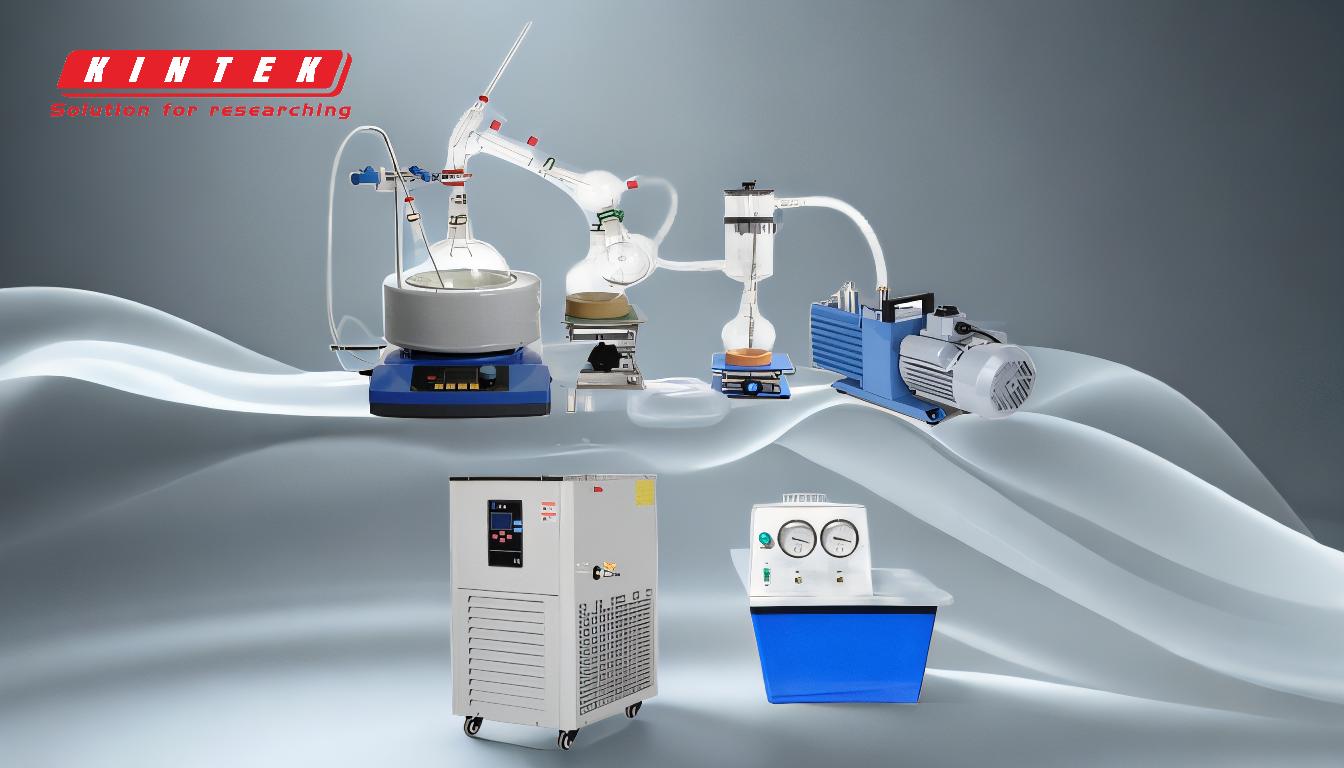Molecular distillation is a specialized distillation process used for separating thermally sensitive materials under extremely low vacuum pressure. It is also known by several other names, including high vacuum wiped film distillation, thin film distillation, and short path distillation. These alternative names reflect the unique characteristics and operational conditions of the process, such as the use of a wiped film mechanism, the creation of a thin film of the material, and the short distance molecules travel during distillation. Molecular distillation is particularly effective for purifying and concentrating natural products, complex molecules, and other heat-sensitive substances.
Key Points Explained:

-
Alternative Names for Molecular Distillation:
- High Vacuum Wiped Film Distillation: This name emphasizes the use of a wiped film mechanism under high vacuum conditions, which helps in creating a thin film of the material to facilitate efficient separation.
- Thin Film Distillation: This term highlights the formation of a thin film of the material on the heated surface, which is crucial for the distillation process as it allows for rapid evaporation and separation.
- Short Path Distillation: This name refers to the short distance that molecules travel from the evaporator to the condenser, which minimizes the exposure of the material to heat and reduces the risk of thermal degradation.
-
Operational Characteristics:
- Extremely Low Vacuum Pressure: Molecular distillation operates at pressures below 0.01 torr (1.3 Pa), which places the process in the free molecular flow regime. In this regime, the mean free path of molecules is comparable to the size of the equipment, allowing for effective separation.
- Free Molecular Flow Regime: At such low pressures, molecules move freely without significant collisions, which is essential for the separation of thermally sensitive materials.
-
Applications:
- Separation of Thermally Sensitive Materials: Molecular distillation is particularly useful for separating substances that are sensitive to heat, as the low operating temperatures minimize the risk of thermal degradation.
- Purification and Concentration: The process is widely used for the purification and concentration of natural products, complex molecules, and other valuable substances.
-
Equipment and Technology:
- Short Path Molecular Distillation Equipment: This equipment is designed to facilitate the short path distillation process, ensuring that molecules travel a minimal distance from the evaporator to the condenser.
- Emerging Technology: Although molecular distillation is a relatively new technology in industrial production, its effectiveness in handling sensitive materials makes it a promising option for various applications.
-
Comparison with Other Distillation Methods:
- Simple Distillation: Unlike simple distillation, which is used for separating liquids with different boiling points, molecular distillation is specifically designed for thermally sensitive materials.
- Fractional Distillation: While fractional distillation is used for separating components of a mixture based on their boiling points, molecular distillation focuses on the separation of substances under low pressure and temperature conditions.
- Vacuum Distillation: Molecular distillation is a specialized form of vacuum distillation, operating at much lower pressures and designed for more delicate materials.
In summary, molecular distillation is a highly specialized process known by several names, including high vacuum wiped film, thin film, and short path distillation. It operates under extremely low vacuum pressures, making it ideal for the separation, purification, and concentration of thermally sensitive materials. The process is characterized by its unique equipment and operational conditions, which distinguish it from other types of distillation.
Summary Table:
| Aspect | Details |
|---|---|
| Alternative Names | High Vacuum Wiped Film, Thin Film, Short Path Distillation |
| Operational Characteristics | Operates at < 0.01 torr, free molecular flow regime, minimal heat exposure |
| Applications | Separation, purification, and concentration of heat-sensitive materials |
| Equipment | Short path molecular distillation equipment |
| Comparison | Differs from simple, fractional, and vacuum distillation |
Discover how molecular distillation can optimize your processes—contact our experts today!










